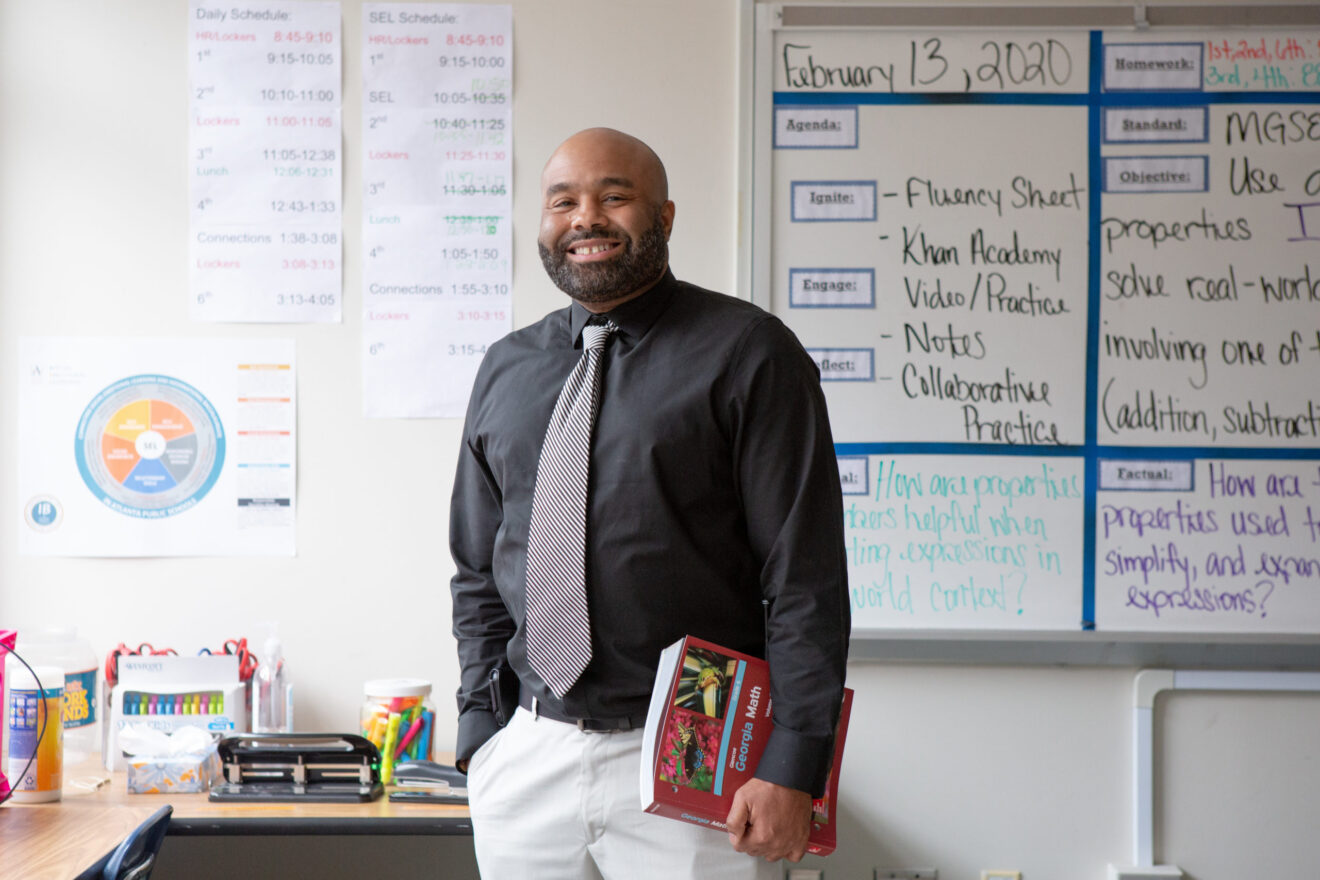Instructional coaches play an important role in supporting teachers and helping them grow in their practice through job-embedded professional learning.
Goal of an instructional coaching cycle

The goal of job-embedded teacher coaching methods is to help teachers improve their instructional practices, increase student learning, and support the overall goals of the school or district. The focus is on practical, hands-on, and immediately relevant strategies that are applied in the classroom, and the most common way to achieve this is through coaching cycles.
However, not all teacher coaching cycles are created equal.
For coaching cycles to be an effective way to support teacher growth and improvement, they need to:
- Have clear goals that measure progress and assess the impact of teacher actions and coaching support
- Be ongoing and iterative, not infrequent and inconsistent
- Show a clear picture of reality to both the teacher and coach
- Be flexible and tailored to the specific needs of the teacher and the context of the classroom
- Require active participation and ownership of the process by the teacher
Before-During-After coaching cycle
When I first began working as an instructional coach, the teacher coaching cycle called Before-During-After, or BDA, was an exemplar through our intermediate unit and the model I used at the start of my instructional coaching.
The origin of the BDA cycle for instructional coaches is unclear, as it has likely evolved from a variety of models and practices. However, the use of observation-based coaching cycles for teachers has been a common practice in education for many years.
Here’s what the BDA cycle involved:
- Before: In this stage, the coach and teacher collaborate to establish learning goals and expectations for the upcoming lesson.
- During: The coach observes the teacher delivering the lesson and provides feedback on their instructional practices.
- After: The coach and teacher reflect on the lesson and discuss areas for improvement.
Challenges with the BDA cycle
However, the BDA cycle really did not make a big difference for teachers and the students in the classroom. And it felt more like a checklist than an actual process. While it changed small things about teaching and learning, it did not make a significant, meaningful difference for teachers and students — and that is my true goal.
Sometimes it could even look a lot like a teacher observation, where the coach is sitting in a classroom and taking notes while coaching a colleague.
While I held a principal’s certification and had extensive training in supervision, I found that this teacher coaching cycle had several limitations.
- Lack of student outcomes. The BDA cycle does not take into account student learning outcomes, making it difficult to determine the impact of the teacher’s instruction on student learning.
- Limited focus and limited time frame. The BDA cycle is focused primarily on the observation of the teacher during instruction, which may not capture the full context of the classroom. Basically one or two observations typically comprise the during phase of the entire cycle.
- One-dimensional feedback. The BDA cycle provides only a snapshot of the teacher’s performance rather than a comprehensive view of their strengths and weaknesses.
- Lack of collaboration. The cycle often relies on the coach providing feedback to the teacher rather than fostering a collaborative relationship between the coach and the teacher.
The Impact Cycle
I knew I wanted to use a teacher coaching cycle that was more effective at supporting teacher growth and improvement. I found Jim Knight’s book “The Impact Cycle” to be the answer to my search.
Knight’s Impact Cycle, also called the Improvement Cycle, is a model for teacher professional development that is designed to help teachers identify areas for improvement, learn new skills and make changes to their practice.
The cycle consists of three stages:
- Identify (Weeks 1 and 2): In this stage, teachers reflect on their practices and identify areas for improvement. This stage involves self-assessment and the gathering of feedback from others, such as students, peers or coaches.
- Learn (Weeks 3 and 4): Teachers seek out opportunities to learn new skills and strategies to address the areas identified for improvement. This stage may involve attending professional development workshops, observing other teachers or seeking guidance from a coach or mentor.
- Improve (Weeks 5 and 6): Teachers apply what they have learned to make changes to their practice. This stage involves putting new skills and strategies into action, monitoring the results and making ongoing adjustments as needed.
Video is strongly recommended by Knight, and I leverage it throughout the cycle. Teachers take a “Picture of Reality” video after the first meeting and “Classroom Snapshot” videos after meeting two through the end of the six-week cycle. Learn more about the power of video in the classroom.
Benefits of the Impact Cycle
Unlike the BDA cycle, the Impact Cycle focuses on student outcomes and encourages teachers to reflect on their practices and make data-driven decisions to improve student learning. Here are some of the benefits of this coaching model:
- Focused goal setting. The Impact Cycle helps coaches and teachers use a PEERS goal to set specific and measurable goals for their work, which helps them to stay focused and make progress over time.
- Collaborative relationship. The framework emphasizes the importance of establishing a collaborative relationship between the coach and the teacher, which can help to build trust and create a positive coaching culture.
- Evidence-based practice. The Impact Cycle encourages coaches and teachers to collect data and reflect on their practice in order to make informed decisions and improve their skills.
- Personalized support. The framework allows coaches to provide personalized support to teachers based on their individual needs and goals.
- Professional growth. The Impact Cycle provides opportunities for teachers to reflect on their practice, learn from their experiences and continuously improve their skills, which can contribute to their professional growth and development.
Training other coaches to use the Impact Cycle
As an instructional coach, I have been fortunate to not only use this model within my school district with my teachers but also teach other coaches around the US about this model as a virtual coach. This teacher coaching cycle has transformed not only my coaching approach but also other coaches’ work.
I asked Kathleen Mertler, a novice elementary coach I worked with from Florida at the Aventura City of Excellence School, how learning about and implementing this method affected and changed her work as an instructional coach.
“Learning the Impact Cycle has given me a focus when coaching my third- through fifth-grade ELA teachers. The coaching cycle offers a clear and very powerful mechanism to provide teachers with a variety of strategies to improve instruction with a focus on enhancing student learning,” Mertler said. “When the focus is on improving student learning and teachers have the power to choose the strategy that works best for them, it’s a win-win situation.
“Teachers need to feel empowered when it comes to what is happening in their classrooms and [this method] does exactly that for my teachers.”
I broached the same question to an experienced high-school instructional coach, Laurie Spence, from CyFair High School in Texas’ Cypress-Fairbanks Independent School District.
“Learning about and implementing the Impact Cycle has changed how I support teachers, whether it is a new or an experienced, veteran teacher,” Spence said. “The process allows for opportunities for deep reflection, giving the teacher ownership in their own learning of perfecting their craft through video. Each classroom snapshot of video allows a brave space for the teacher to be vulnerable and practice a growth mindset.
“[The method] changed my approach and questioning with a teacher after years of coaching teachers and impacted a veteran teacher on her classroom management that she had perfected after 10 years of teaching..”
Coaching cycles done right can play a crucial role in promoting individual and organizational growth, improving teaching and student learning, setting goals, receiving support in developing skills and knowledge for staff, and building stronger relationships between teachers and coaches.
Donna Spangler is the K–12 instructional coach department chair for Derry Township School District in Hershey, Pa. She served as past co-president of the board for the Learning Forward PA, ran a school induction and mentoring program for six years and has co-authored a book. She also provides virtual coaching for Sibme.
Opinions expressed by SmartBrief contributors are their own.
_________________________
Subscribe to SmartBrief’s FREE email newsletter to see the latest hot topics on EdTech. It’s among SmartBrief’s more than 250 industry-focused newsletters.
